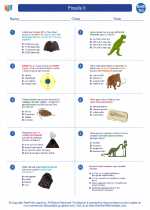Focal Length
Focal length is a key concept in understanding how lenses and mirrors work. It is a measure of how strongly a lens or mirror converges or diverges light. The focal length of a lens is the distance from the lens to the point where parallel rays of light converge or appear to diverge after passing through the lens.
Types of Focal Length
There are two types of focal length: positive and negative. A positive focal length is characteristic of a converging lens, where parallel rays of light converge to a point after passing through the lens. A negative focal length is characteristic of a diverging lens, where parallel rays of light appear to diverge from a point behind the lens.
Focal Length Formula
The focal length of a lens can be calculated using the lens equation:
1/f = 1/do + 1/di
Where:
- f is the focal length of the lens
- do is the object distance (distance from the object to the lens)
- di is the image distance (distance from the lens to the image)
Application of Focal Length
The focal length of a lens or mirror determines its optical power. Lenses with shorter focal lengths have greater optical power, meaning they can bend light more strongly and are used for magnifying objects. Lenses with longer focal lengths have lower optical power and are used for spreading out light rays, such as in cameras and telescopes.



